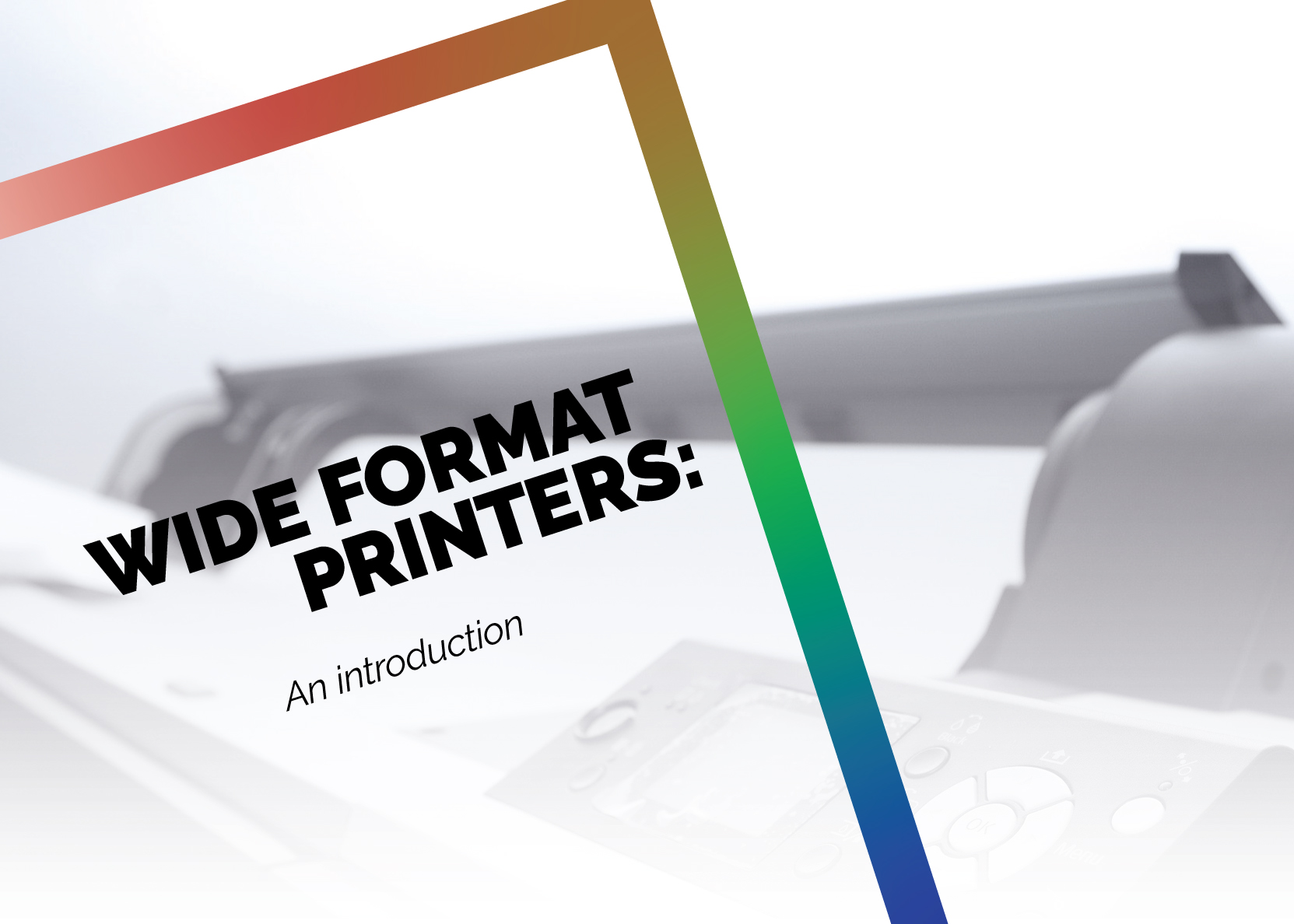11 min read
Best IT Strategies for Law Firms Going Into 2026
Why should a law firm invest in a strong modern IT strategy? Today’s legal teams depend on secure, reliable technology to protect sensitive...

Wide format printers cover a vast array of mediums, uses, and products — from doors to billboards, restaurant menus to architectural drawings, wide format printers are designed to solve a myriad of printing issues.
And because there are so many scenarios and solutions wide format printers can be applied to, it can often be difficult to determine just what your organization needs, what it is capable of achieving through wide format printing, and possible future issues of which you need to be aware.
So, what you really need to know isn’t a long list of specifications and jargon — you need to know the right questions to ask yourself and your team.
When planning a purchase, we tend to consider the features we want — 16 GB of RAM, 30 miles per gallon — we compare and contrast options based on the features they offer. And that usually works with laptops and cars — but when planning the purchase or lease of a wide format machine, you’ll want to start with questions that determine your print’s use case:
Your answers to these questions will help determine the best-fitting wide format printer for your organization.
Let’s go over a few examples:
If a company needed to produce a print for a sign that would be seen by someone driving in a car down the highway, then durability will matter much more than quality. If an office is expecting a high-quality, vibrantly colored print to adorn their walls, quality and durability will both be important.
After determining how it will be used, the next step should be determining the needs of your operations. Knowing your prints’ use cases will help you determine what features your wide format printer truly needs. Aspects you should consider are:
The type of print process your printer uses will hold major influence over the durability of the print as well as the speed at which you can effectively use those prints. Solvent inks, for example, usually require some curing time before the finishing process. Of course, the types of media used will also affect durability.
Wide format printers vary drastically in printable width — from small personal wide format printers of 17 to 24 inches up to giant flatbed printers with print widths larger than 9 feet.
Speed and duty cycle are two factors that also hold significant sway over your business’ ability to produce prints. Speed is obvious — how fast do you need to print your product? Duty cycle refers to the amount of prints you plan to produce in a set amount of time, usually monthly.
Both speed and duty cycle, however, are influenced by other features that can affect the overall productivity of the machine. For example, stacking capability, available media types/sizes, processing speed, and other factors can greatly enhance or cripple a printer’s productivity.
For example, the amount of stacking capability can be crucial when considering a wide format printer for construction plans. Many times, multiple sets of drawings will need to be printed and these sets can be hundreds of pages each. When faced with this task it would crush productivity to need to clear the printed sheets after only a few.
Productivity is also affected by the ability to make use of multiple rolls – both as media to print to, as well as to use as a take up roll for finished prints. Referring to the previous example of producing construction plans, most applications will require using at least two widths of paper, such as 36” for Architectural D sized drawings and 30” for Architectural E1. The need to reload the correct paper each time it is request would certainly affect the usefulness of the printer.
The ability to scan can also be very important for many organizations. Wide format scanners are almost as varied as the printers in size, quality, speed, and media support. Wide format equipment designed to support the construction industry will typically have scanner options provided as part of the printer. These scanners are usually designed for medium quality and speed with construction plans being the best application. However, most scanners in this class will do a fine job on all document types.
In short, knowing the capabilities your wide format printer needs is more that saying, “I want to print something wide.”
Throughout the wide format printer industry, there are printers designed for four different markets:
Each market will have machines that fit its specific needs. Many wide format printers are capable of producing prints for various types of applications, but due to specialization, using a wide format printer in a unintended way will not be ideal. Could you produce a set of construction plans on a printer tailored to fit the high-quality photographic market? Sure, but you probably would not want to do it all the time. Both productivity and the cost of operation would be prohibitive.
If you’re an artist with the need for a few prints on occasion, a personal wide format printer from an online retailer will likely fit your needs perfectly, and the acquisition cost will be minimal. If you were to use that same printer for a hundred prints a week, however, your operational costs would skyrocket, and very quickly overtake your initial expense of purchasing the actual printer.
Always part of your consideration should be delivery, installation, and potentially training.
For example, many wide format printers can be bought online - and usually at seemingly lower cost. Personal low-cost devices are designed for end user installation and setup, but as the size and complexity increases, the ability of the average consumer to successfully install and use the device becomes more daunting. Many customers have ordered online to save a few dollars only to find themselves staring at a 350-pound box on a pallet outside their door. Beware of what’s NOT included when purchasing online and know what to expect.
Along the same line, maintenance can be difficult and expensive and service contracts are recommended for more complex devices. While a service plan may seem like it’s costing you more, a contract can pay for itself with only a few repairs, especially when additional supplies can be included in the plan.
While this article lays out some of the basics in defining your needs with regards to a wide format device, it barely scratches the surface when it comes to the vast array of brands and solutions on the market.

11 min read
Why should a law firm invest in a strong modern IT strategy? Today’s legal teams depend on secure, reliable technology to protect sensitive...

2 min read
The Louvre’s password became the punchline of a global story after a heist revealed major security concerns for the museum. Reports say the password...

6 min read
Organizations of all sizes handle enormous volumes of data. Data is one of the most valuable assets of any organization.Unfortunately, it’s also a...